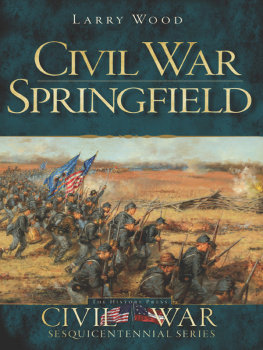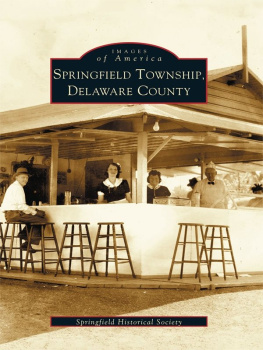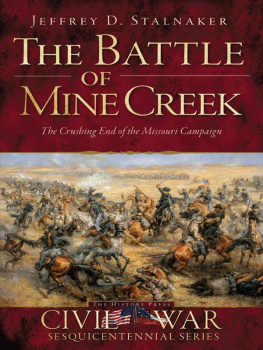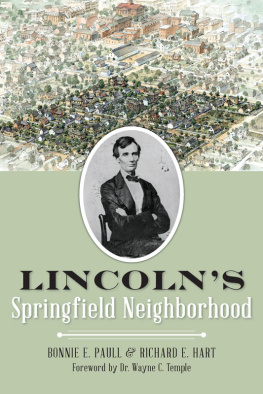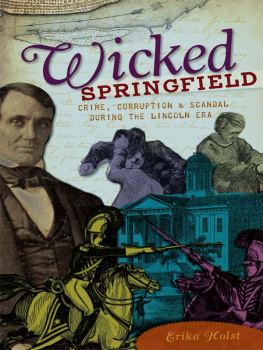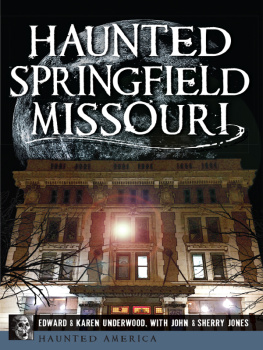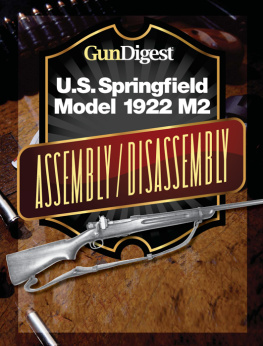

Published by The History Press
Charleston, SC 29403
www.historypress.net
Copyright 2011 by Larry Wood
All rights reserved
Cover image: That Beautiful Charge, Andy Thomas, artist, Carthage, Missouri.
First published 2011
e-book edition 2012
ISBN 978.1.61423.330.5
Wood, Larry (Larry E.)
Civil War Springfield / Larry Wood ; series editor, Doug Bostick.
p. cm.
Includes bibliographical references and index.
print edition ISBN 978-1-60949-308-0
1. Springfield (Mo.)--History, Military--19th century. 2. Springfield Region (Mo.)--History, Military--19th century. 3. Battles--Missouri--Springfield--History--19th century. 4. Battles--Missouri--Springfield Region--History--19th century. 5. Missouri--History--Civil War, 1861-1865--Campaigns. 6. Missouri--Military relations--Kansas. 7. Kansas--Military relations--Missouri. 8. United States--History--Civil War, 1861-1865--Campaigns. I. Bostick, Douglas W. II. Title.
F474.S7W66 2011
977.87803--dc23
2011041390
Notice: The information in this book is true and complete to the best of our knowledge. It is offered without guarantee on the part of the author or The History Press. The author and The History Press disclaim all liability in connection with the use of this book.
All rights reserved. No part of this book may be reproduced or transmitted in any form whatsoever without prior written permission from the publisher except in the case of brief quotations embodied in critical articles and reviews.
Contents
Acknowledgements
A writer of history usually needs considerable help from other people because completing a work of history involves tasks like doing research and gathering images in addition to the actual writing. I know that I received a lot of help in completing this book, and I would like to thank those individuals who facilitated the task for me.
As usual, the Joplin Public Library was the starting point of my research and the facility through which I obtained many materials via interlibrary loan. I would particularly like to thank the reference staff at the Joplin Public Library, including Patty Crane, Jason Sullivan, Jill Halbach-Boswell, Cheryl Smith, and Chris Hamm.
Many of the images in the book came from the Wilsons Creek Civil War Museum at the Wilsons Creek National Battlefield, and I want to thank the museum and its staff, particularly Deborah Wood and Alan Chilton, for making the images available to me. I also spent time researching at the Hulston Library at Wilsons Creek, and I want to thank librarian Jeff Patrick and his volunteer staff for their help.
Joan Hampton-Porter, curator of the SpringfieldGreene County Historical Museum, was very helpful during my research visit to the museum. Joan and the museum also provided a couple of images that I have used in the book.
I made several trips to the SpringfieldGreene County Library Center to research in the Local History section, and I would like to thank the library staff, particularly Patti Hobbs and Michael Glenn, for their help during those visits.
Robert Neumann and his staff also provided helpful assistance during a couple of visits I made to the Greene County Archives and Records Center.
I need to mention the staff at the Missouri State Archives in Jefferson City and the staff at the State Historical Society of Missouri in Columbia, both of which I found helpful during my visits, although I neglected to collect individual names.
I want to say a special thanks to Andy and Dina Thomas for allowing me to use an image of one of Andys paintings on the cover of the book.
J. Dale West has provided me with several images for past projects, and he again allowed me to use an image from his collection for this book.
My wife, Gigi, served as the first reader of the manuscript, and I thank her for both her proofreading skills and her support.
Lastly, I want to say thanks to History Press project editor Ryan Finn for his thorough and competent review of the manuscript. I know that his contribution has enhanced the overall quality of the final product.
Introduction
In 1830, John Polk Campbell brought his family to southwest Missouri from Tennessee and settled near a spring, where he had staked a claim the previous year in an area that later became Springfield. The site is located near the present-day Founders Park at the corner of Jefferson and Water Streets. In 1835, Campbell laid out the town of Springfield and donated a fifty-acre tract of land to the new village. The same year, Springfield was named the county seat of Greene County, which had been formed two years earlier. In 1837, a courthouse was built on the public square, and the next year the town was officially incorporated.
By the eve of the Civil War, Springfield boasted a population of about 1,200 residents. Some estimates place the figure higher than this, but the 1860 census reveals that Campbell Township as a whole, encompassing not only Springfield but also the rural areas surrounding the town, had a white population of only 2,616. So the 1,200 figure for Springfield proper is probably accurate. However, because it was the principal town in the still-frontier region of southwest Missouri, Springfield was more important than its size might have indicated.
As the editor of the Springfield Mirror said in 1859, even though the town was a small place, the residents were by no means an idle people. At the time, according to the newspaperman, Springfield had sixteen mercantile stores, two drugstores, two tobacconists, ten carpenters, seven blacksmith shops, two tinsmiths, two saddle and harness makers, three wagon and buggy shops, three taverns, three jewelers, and two printing offices. In addition, the town boasted three churches, five schools, ten lawyers, several doctors, and several fraternal organizations. The main thing wanting in Springfield, according to the editor, was a railroad. Once a railroad line reached the town, he predicted, Springfield would prosper greatly.
Even without a railroad, Springfield, as the center of commerce for southwest Missouri, was considered a strategic location by both sides during the Civil War. From the beginning of the war, the town functioned as a supply depot and gathering place for armies, and it served as a military headquarters for much of the conflict. North and South vied throughout the war to see which side would occupy Springfield, and control of the town seesawed back and forth early on.
Springfield bustled with activity, and sometimes the action got warm, such as during the Battle of Wilsons Creek, when the town served as a hospital for the wounded, and during the Battle of Springfield, when many locals took part in the defense of their own town. This book, however, is not just about battles. It is a book about Springfield as it was during the Civil War.
Chapter 1
The Prewar Years
Kansas Bleeds into Southwest Missouri
The bombardment of Fort Sumter by Confederate artillery in April 1861 marked the official beginning of the Civil War, but it is scarcely a stretch to suggest that the war actually began several years earlier on the Kansas-Missouri border during the battle over Kansas statehood that came to be known as Bleeding Kansas. In fact, the roots of the Civil War can be traced even further back, at least to the birth of the nation, when sectional disagreement over the issue of slavery led to the adoption of the three-fifths compromise in the United States Constitution. The slavery issue was still festering in 1820 when the Missouri Compromise stipulated that Missouri would be admitted to the Union as a slave state (while Maine was admitted as a free state) but that no additional states lying north of Missouris southern border could be admitted as slave states. The Kansas-Nebraska Act of 1854, however, effectively nullified the Missouri Compromise by opening those two new territories to white settlement and stipulating that, in the name of popular sovereignty, the people residing in the territories would decide for themselves whether they wanted to allow slavery within their boundaries.
Next page
